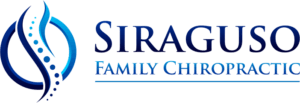Discogenic Low Back Pain
What is discogenic low back pain?
Discogenic low back pain is back pain caused by a compromised degenerated disc in the lumbar spine. This low back condition is the most common cause of pain in the lumbar spine and can lead to spinal stenosis and inflammation resulting in nerve compression.
Symptoms of discogenic low back pain:
Symptoms include localized low back pain, radicular pain into the leg also known as sciatica, or as far as the foot with accompanied numbness, tingling, or motor weakness. This is also known as radiculitis or radiculopathy.
Usually, symptoms are linked to the long-term activities that increase the force on the intervertebral discs, overtime causing a disc (discogenic spondylosis) or several discs to become compromised. If three or more discs are involved, then it is referred to as Degenerative Disc Disease.
Diagnosis of Degenerative Disc Disease:
The Chiropractor will take a full subjective medical history, take X-Rays or refer for the necessary imaging such as MRI, do a full objective exam including orthopedic testing, range of motion testing, muscle, reflex and sensory testing. Once a diagnosis has been established, a treatment will be recommended.
Chiropractic treatment for disc related issues
The aim of chiropractic treatment for degenerative disc problems is to enhance the proper mechanism of the joints by restoring spinal motion and eliminating inflammation. Using spinal manipulation will restore motion in the joint but will also promote a vascularity and stronger blood supply to the affected region. Improved vascularity to the area will give the disc much needed nutrition to promote and speed the healing process while decreasing inflammation around the nerve, thereby decreasing the symptoms caused by the compromised disc. Some chiropractors may use spinal decompression or flexion distraction to open the facet joints and mobilize the joint. These two therapies can be very beneficial for patients with disc issues.
The chiropractor will also prescribe stretches and exercises or co treat with physical therapy for this type of injury. It is also recommended for most to get an inversion table for those suffering with lumbar disc issues. It is one of the best at home therapies you could use for a compromised disc. Incorporating these recommendations into a daily routine will help stop the progression of the degenerative changes.
If symptoms are severe enough the patient should be referred from conservative care (chiropractic or physical therapy) to pain management, neurology, or for an orthopedic consultation. The neurologist or ortho may make recommendations on surgical intervention.
At home therapy
See our article on lumbar inversion tables for more information on at home therapies. A teeter inversion table may be beneficial for this condition.
Schedule an Appointment
If you or any of your loved ones would like to schedule an appointment Click Here!
